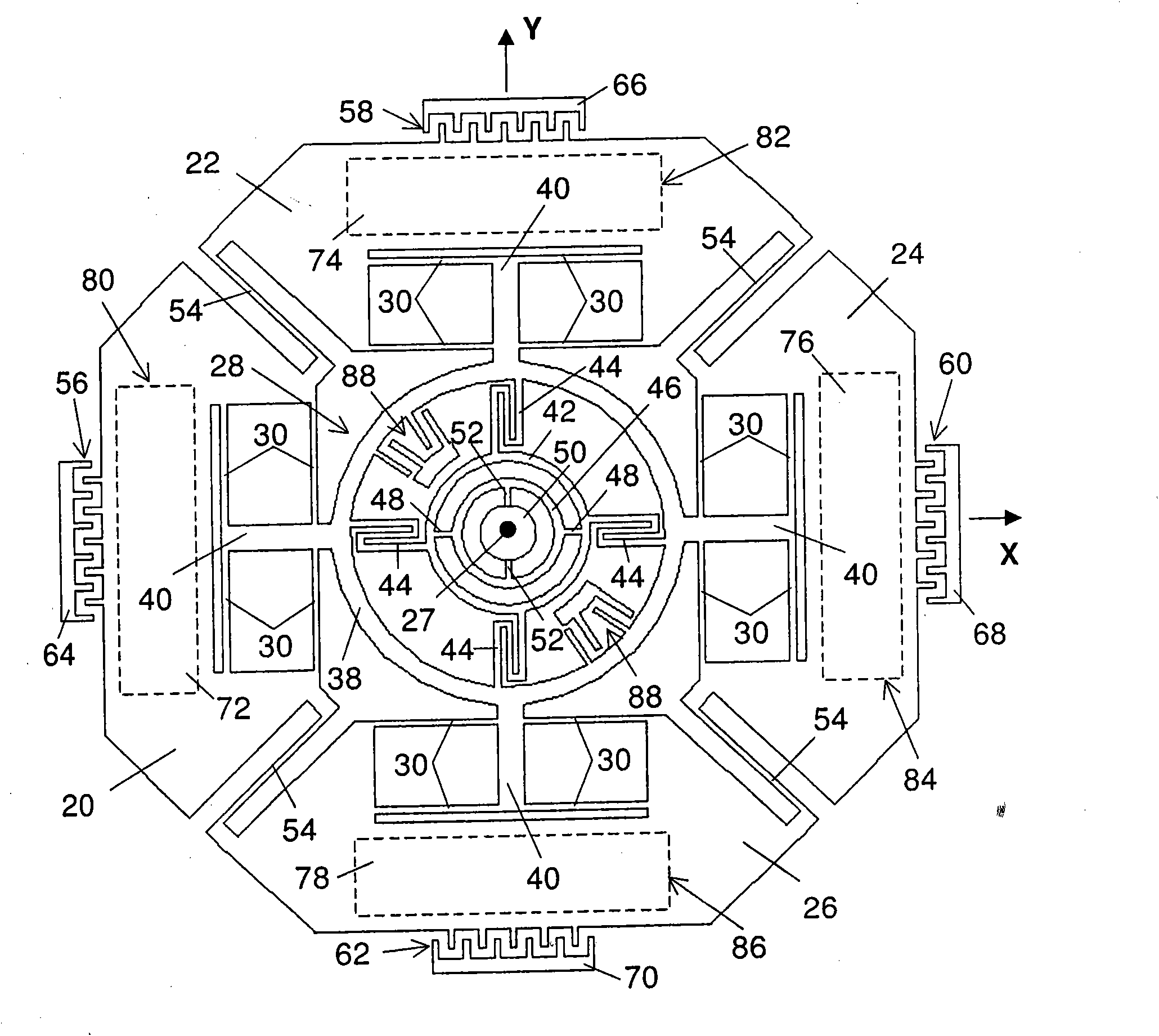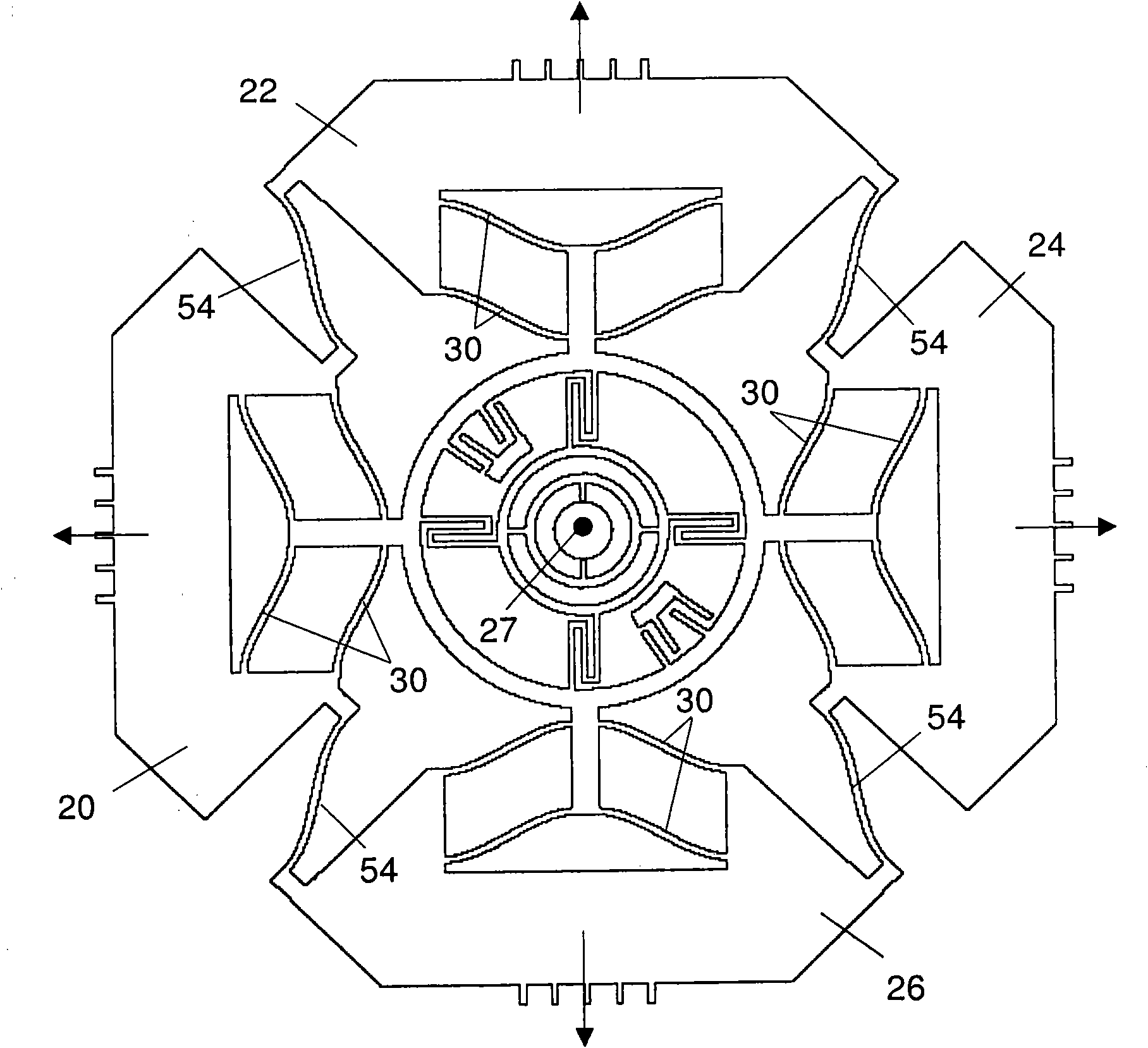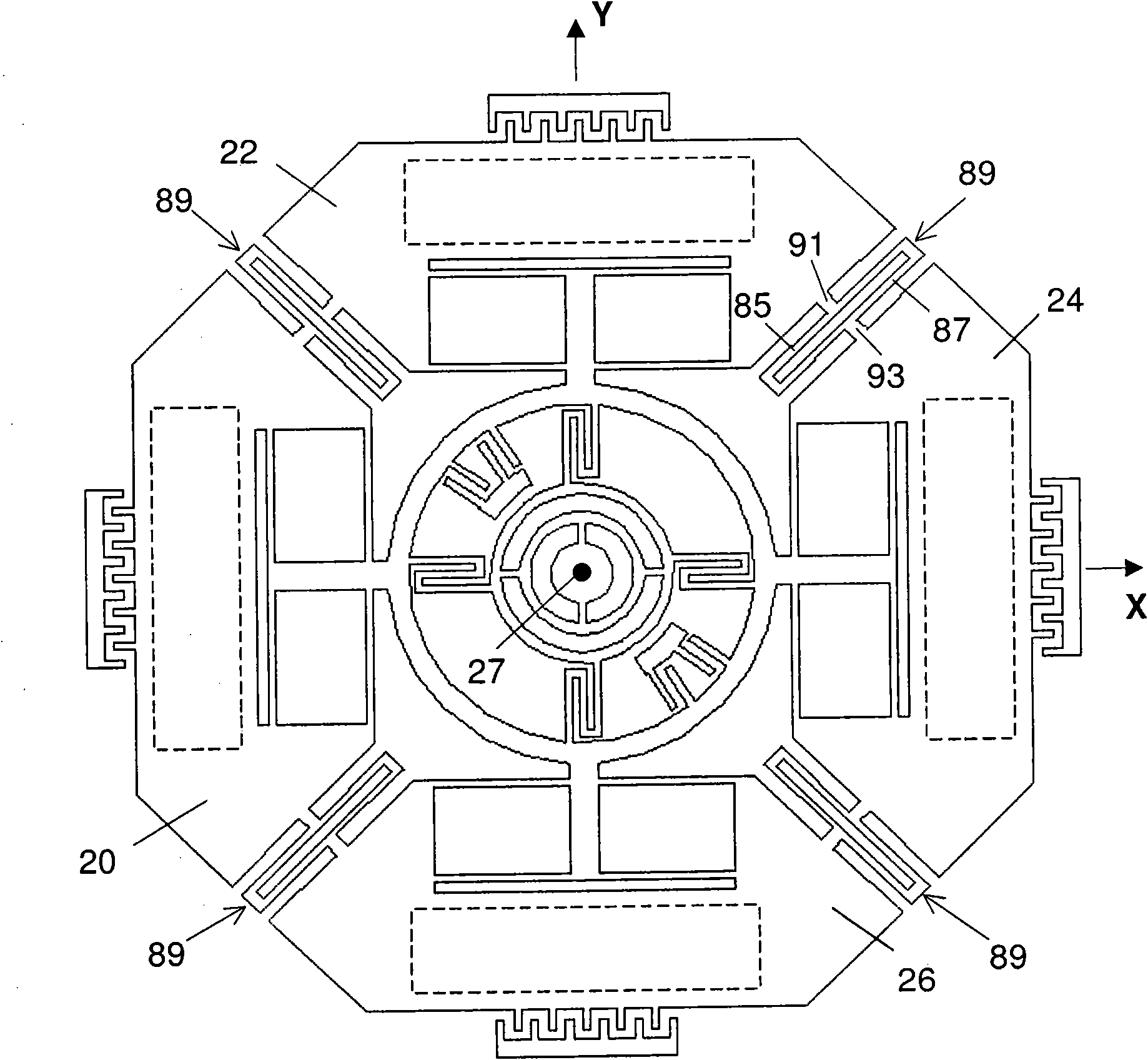Tri-axis angular rate sensor
An angular rate sensor and sensing technology, applied in the direction of instruments, steering sensing equipment, gyroscope/steering sensing equipment, etc.
- Summary
- Abstract
- Description
- Claims
- Application Information
AI Technical Summary
Problems solved by technology
Method used
Image
Examples
Embodiment Construction
[0021] Such as figure 1 As shown in , a velocity sensor generally has four generally planar butterfly wing-shaped proof masses 20, 22, 24, 26 that lie in an x, y reference plane when the device is at rest. The proof masses are arranged around the intersection of the X and Y axes (ie the center 27 ), with the masses 20, 24 along the X axis and the masses 22, 26 along the Y axis.
[0022] The proof mass is mounted on a support frame, or sensing frame 28 , by flexible beams or flexures 30 . These flexures constrain the linear movement of each mass in a drive mode relative to the sensing framework along a predetermined axis, which is the drive axis for that mass. The drive axes of the masses 20, 24 are along the X-axis and the drive axes of the masses 22, 26 are along the Y-axis.
[0023] The flexures for each mass are more flexible in the direction along the drive axis of that mass and stiffer in the other directions. The use of multiple sets of flexures for each mass further ...
PUM
 Login to View More
Login to View More Abstract
Description
Claims
Application Information
 Login to View More
Login to View More - R&D
- Intellectual Property
- Life Sciences
- Materials
- Tech Scout
- Unparalleled Data Quality
- Higher Quality Content
- 60% Fewer Hallucinations
Browse by: Latest US Patents, China's latest patents, Technical Efficacy Thesaurus, Application Domain, Technology Topic, Popular Technical Reports.
© 2025 PatSnap. All rights reserved.Legal|Privacy policy|Modern Slavery Act Transparency Statement|Sitemap|About US| Contact US: help@patsnap.com



